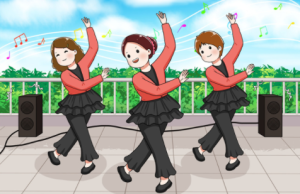Square Dancing: A Celebration of Community, Not a Cause for Condemnation
- 广场舞百科
- 2024-04-04 01:16:19
- 38
Content:

Square dancing has become an integral part of urban culture in recent years. What was once a pastime exclusive to rural areas has now found immense popularity in cities. Every evening, you can witness groups of people, young and old, gathered in parks and squares, moving to the rhythm of music. However, this growing trend has also sparked debates about whether square dancing should be forbidden due to the noise it generates.
From my perspective, banning square dancing is not the solution. Instead, we should focus on finding a balance that allows people to enjoy this form of exercise while ensuring the peace and tranquility of residents living nearby.
Firstly, square dancing offers numerous health benefits. It is a fun and interactive way to stay fit, promoting physical well-being and mental relaxation. In our fast-paced lives, where stress and sedentary lifestyles have become the norm, square dancing provides an opportunity for people to engage in regular physical activity, fostering a healthier society.
Moreover, square dancing serves as a platform for social interaction. It brings people together, encouraging community bonding and fostering friendships. In a world where technology often hinders face-to-face communication, square dancing offers a chance for people to connect with their neighbors, building a sense of unity and belonging.
The squares and parks where these dances take place are public spaces meant for the enjoyment of all. By prohibiting square dancing, we would be depriving the dancers of their right to use these areas for their recreational activities. Instead, we can implement measures to minimize the noise disruptions. For instance, setting specific time slots for dancing or using noise-cancelling speakers can help reduce the impact on nearby residents.
It is also crucial to acknowledge the rights of the people living around these squares. They deserve peace and quiet in their homes. Therefore, it is the responsibility of the dancers to be considerate of others. By being mindful of the volume of the music and the time of the dance sessions, we can ensure that the enjoyment of the dancers does not infringe upon the rights of the residents.
In conclusion, square dancing should not be forbidden. Instead, we should strive to create a harmonious coexistence between the dancers and the residents. By promoting understanding and implementing noise-reduction measures, we can preserve this cultural tradition while respecting the rights of all parties involved. Let us embrace square dancing as a celebration of community, unity, and health, rather than allowing it to become a cause for contention.
免责声明:本网站上的所有文章内容均来自互联网。本网站仅在法律允许的范围内使用、分享和传播这些内容,不违反任何版权或知识产权法。如发现本站有涉嫌抄袭侵权/违法违规的内容,请发送邮件25538@qq.com举报,一经查实,本站将立刻删除。
本文链接:https://zhuangrou.com/gcw/5805.html



















